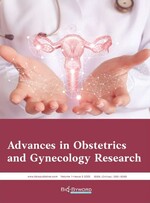Abstract
Objective: To explore and analyze the application of laparoscopic surgery in benign gynecological tumors. Methods: Forty patients with benign gynecological tumors admitted to the Department of Gynecology in Gaoyou People’s Hospital from August 2022 to August 2023 were selected as research subjects. They were divided into a research group (n = 20) and a reference group (n = 20) using the double-blind method. The research group received laparoscopic surgery, while the reference group underwent conventional treatment. Immune indicators, inflammatory factor levels, surgical outcomes, and test indicators were compared between the groups. Results: Before surgery, immune indicators such as CD8+, CD4+, CD4+/CD8+, and CD3+ were comparable between the groups (P > 0.05). Post-surgery, the research group exhibited better results in immune indicators compared to the reference group (P < 0.05). Before treatment, levels of inflammatory factors including IL-4, IL-2, and TNF-α showed no statistically significant difference (P > 0.05). However, after surgery, the research group demonstrated significantly better outcomes in terms of inflammatory factors compared to the reference group (P < 0.05). Surgical outcomes such as blood loss, postoperative recovery time, hospitalization time, anal exhaust time, and drainage tube removal time in the research group were significantly better than those in the reference group (P < 0.05). Before surgery, test indicators such as hemoglobin, C-reactive protein, and albumin were similar between the groups (P > 0.05). After surgery, the research group showed significantly better outcomes in test indicators compared to the reference group (P < 0.05). Conclusion: Laparoscopic surgery demonstrates a notable curative effect on benign gynecological tumors, warranting widespread application and promotion.
References
Yao S, Yan J, Ke Y, et al., 2022, Network Meta-Analysis of Low Molecular Weight Heparin Combined with Physical Therapy to Prevent Deep Vein Thrombosis of Lower Limbs After Gynecological Tumor Surgery. New Medical Knowledge, 32(2): 108–119.
Wu D, Li M, Wang M, et al., 2021, Clinical Observation of Da Vinci Robot Surgery in the Treatment of Elderly Patients with Gynecological Malignant Tumors. Chinese Journal of Laparoscopic Surgery, 14(6): 332–337.
Su T, Zhan Z, 2021, Research on the Correlation between alpha-1-Acid Glycoprotein and the Toxicity and Side Effects of Paclitaxel Drug Treatment in Patients with Gynecological Tumors. Heilongjiang Traditional Chinese Medicine, 50(6): 479–480.
Suolang H, Zezhen Z, 2021, Observation on the Effect of Tibetan Medicine 26-Flavored Poxue Powder Combined with Tibetan Medicine 11-Flavored Sea Buckthorn Pills in the Treatment of Patients with Gynecological Cancer Diseases. Electronic Journal of Practical Gynecological Endocrinology, 8(15): 27–29.
Jiang H, Li X, Chen Y, et al., 2021, Research Progress on the Impact of Radiation Therapy for Gynecological Tumors on the Intestinal Microorganisms of Patients and Its Relationship with Radiation Enteritis. Chinese Journal of Clinical Obstetrics and Gynecology, 22(2): 207–209.
Zhu Y, Wu Y, Zhang H, 2020, Effect of Improved Posture Combined with Traditional Chinese Medicine Nursing on the Satisfaction Rate and Compliance of Patients with PICC Catheter Treatment for Gynecological Tumors. New Chinese Medicine, 52(22): 135–137.
Dong S, Chen L, Wang Y, et al., 2020, Comparison of the Efficacy and Patient Satisfaction of Single-Port and Multi-Port Laparoscopic Surgery in the Treatment of Benign and Malignant Gynecological Tumors. Chinese Journal of Clinical Medicine for Women and Children, 16(4): 409–416.
Mo Z, 2020, Clinical Effect and Application Value of Low Molecular Weight Heparin Sodium Combined with Air Pressure Therapy in Preventing Deep Vein Thrombosis (DVT) of the Lower Limbs After Gynecological Tumor Surgery. Modern Preventive Medicine, 47(14): 2681–2684.
Hu W, Zou L, Chen C, et al., 2020, Effects of Low Molecular Weight Heparin Sodium on the Prevention of LEDVT and Coagulation Function in Patients Undergoing Gynecological Tumor Surgery. Electronic Journal of Modern Medicine and Health Research, 4(9): 21–23.
Gong H, 2020, Analysis of the Application Value of Aprepitant Combined with Dexamethasone and Ondansetron in Preventing Nausea and Vomiting Caused by Cisplatin Chemotherapy for Gynecological Tumors. Clinical Research, 28(5): 106–108.
Wang Z, Qin Z, Chen J, et al., 2019, Preliminary Exploration of Single-Port Laparoscopic Surgery Through Natural Channel in the Treatment of Benign Gynecological Tumors in Primary Hospitals. Electronic Journal of Practical Gynecological Endocrinology, 6(35): 8–12.
Lu J, Zhan J, Ye Q, 2019, Serum C-Reactive Protein and Procalcitonin are Used to Evaluate the Value of Antibiotics in the Treatment of Anaerobic Pelvic Infections After Gynecological Tumor Surgery. Chinese Journal of Hospital Infectious Diseases, 29(24): 3809–3813.
Han X, 2019, Evaluation of the Effect of Air Pressure Therapy Device Combined with Low Molecular Weight Heparin in Preventing Deep Vein Thrombosis of the Lower Limbs After Gynecological Malignant Tumor Surgery. Chinese Modern Drug Application, 13(21): 72–73.
Wu J, Chen J, Wang Z, et al., 2019, The First V-NOTES Single-Port Laparoscopic Surgery for Benign Gynecological Tumors in Jintan Area, Changzhou. Electronic Journal of Practical Gynecological Endocrinology, 6(17): 194–196.
Shi Y, 2018, Clinical Efficacy of Laparoscopic Surgery in the Treatment of Elderly Gynecological Malignant Tumors and Its Impact on Patients’ Postoperative Quality of Life. Huaihai Medicine, 36(3): 253–255.
